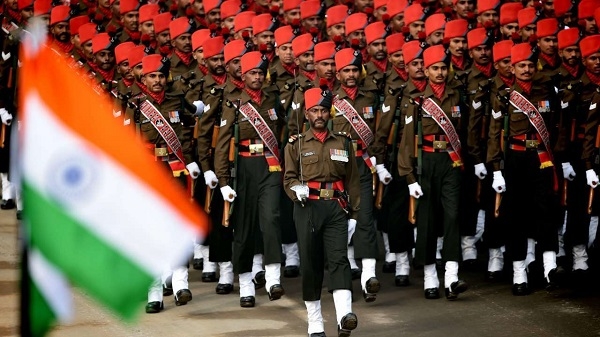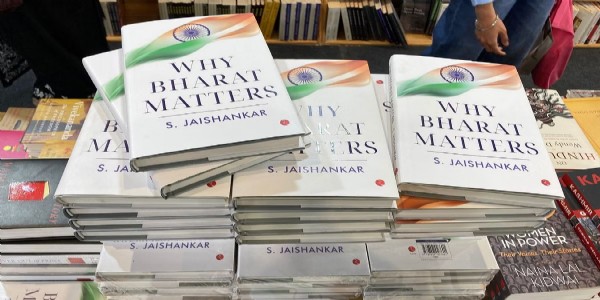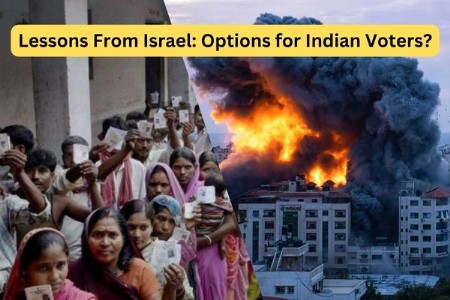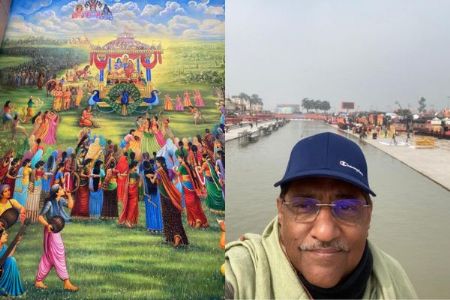Republic Day Parade : Then And Now
Total Views | 274
On 15 August, India was declared independent from British colonialism and reins of control were handed over to our Leaders. But, Republic Day (RD) is celebrated in India on every 26 January since 1950. It is done so, to commemorate the date on which the Constitution of India became effective. India was British Colony for over 200 years and became independent on 14 August, 1947.Since country had no Constitution, our laws were based on a modified version of British established, Government of India Act 1935. However, on 29 August 1947, a Drafting Committee was appointed for the drafting of an Indian Constitution.The Drafting Committee had seven members: Alladi Krishnaswami Ayyar, N. Gopalaswami; B.R. Ambedkar, K.M Munshi, Mohammad Saadulla, B.L. Mitter and D.P. Khaitan. At its first meeting on 30th August 1947, the Drafting Committee elected B.R Ambedkar as its Chairman. Subsequently,26 January,1950 was chosen to declare India a Sovereign Republic since, Indian National Congress had made Declaration of Indian Independence, Sampurna Swarajya, on 26 January 1929. The said Constitution was adopted by Indian Constituent Assembly on 26 November 1949.But it came into force in 1950 completing country’s transition into a Sovereign Republic.
India will celebrate its 72nd Republic Day on Tuesday, 26 January,2021, with great fervor and zeal. India celebrated its first Republic Day with great fanfare and a Colourful Parade at Delhi. Thereafter, the tradition continued. This Grand Parade showcases our defence capablities, diversity and cultural heritage. First four RD Parades were held at different places in Delhi; 1950 Red Fort, 1951Ramlila Grounds, 1952 Irwin Stadium and 1954 Kingsway. First celebration at Rajpath was held in 1955.Delhi parade is the largest and most important event which is main attraction of RD Celebrations which last for Three days.

Prior to the commencement of RD Parade, Prime Minister lays a floral wreath at Amar Jawan Jyoti, a memorial of Fallen Soldiers at one end of Rajpath. It is followed by Two Minutes Silence in the memory of Fallen Soldiers. It is a solemn reminder of the Sacrifice of the Martyrs who died for the country in succeeding wars to defend Sovereignty of their Country. This Jyoti was installed after 1971 Indo Pak War in front of India Gate which was erected to honour Soldiers who laid down their lives in Two World Wars. Thereafter he/she reaches the Main Saluting Dias at Rajpath to join other Civil/Foreign Dignitaries. The President arrives along with the Chief Guest in a Car Pool, escorted on horseback by Troops of President’s Bodyguard. Helicopters then fly past the parade area showering rose petals on audience.
Parade starts from Rashtrapati Bhawan along the Rajpath after unfurling of National Flag by President of India. The President unfurls the National Flag, as the National Anthem is played, and a 21 Gun Salute is given as the PBG renders the National Salute. Firing is not done with 21 Canons but by seven “25-Pounders”, firing in Three rounds. Time of Gun Salute Firing matches with the time at which the National Anthem is played. First firing commences at start of National Anthem and Last Round is fired right after 52 seconds. These cannons were made in 1941 and are involved in all the formal programmes of Army.
Next, important awards like the Ashok Chakra and Kirti Chakra are given away by the President. President comes forward to award the Medals to Soldiers and Civilians/their Next of Kin, who have distinguished themselves by their different acts of valour in different situations, for their exceptional courage in the field. This is followed by marching columns from Fifteen to Twenty different Regiments of Army, Navy and Air Force along with their bands march past in all their finery and official decorations. Twelve contingents of various Central Armed Police Force, Delhi Police and National Cadet Corps and other Civil Forces as also school children from various schools in the Capital also take part in this Parade. One of the unique sights of the parade is the Camel Mounted Border Security Force Contingent, which is the only Camel Mounted Military Force in the world. Usually there are 146 Contingents who participate in RD Parade. Children who receive the National Bravery Award and recipients of Param Veer Chakra, the Highest Gallantry Award in War, ride past the spectators on colourfully decorated elephants or vehicles. Tableaus from various States/Government Departments signifying our culture/work ethos are displayed.
Generally,35 to 40Tableaux Floats exhibiting the Cultures of the various States and Union Territories, Union Ministries and State Enterprises depicting scenes of activities of people in those states form part of Parade while music and songs accompany each display. Each display brings out the diversity and richness of the culture of India and the whole show lends a festive air to the occasion. The selection process of Tableaux Floats is conducted by the Ministry of Defence. Each Tableaux Float represents a historical event, heritage, culture, development programmes and environment. The tableaux cannot carry any logo. Proposals are invited within a fixed deadline and examined by a Committee of Experts. Examination process involves Two Rounds. First Round provides suggestions for modifications, after evaluating the sketches and designs. Second Round evaluates three dimensional models, after which a final election is made. Around 1200 School Children also participate in the parade singing patriotic songs and present cultural dances. President of India who is the Commander-in-Chief of the Indian Armed Forces, takes the salute.
Parade traditionally ends with dare devil motor cycle riding display by motorcycle units of Armed Forces/Central Armed Police Force and a Air Power Display by Indian Air Force Fighters/Transport Planes/Helicopters such as Sukhoy 30 MKI, Jaguar, Mig 29, C-17 Globemaster and HAL Rudra. Parade concludes with a "Fly Past" by the Indian Air Force, which involves Fighter Planes flying past the Dais, symbolically saluting the President. These leave trails of smoke in the colors of the Indian Flag. Responsibility for “Fly Past” is that of Western Air Command, which traditionally involves participation of 48 Aircrafts. The Aircrafts involved in the parade take off from different Flying Bases of IAF and reach Rajpath at a fixed time. A full dress rehearsal parade is organised on 23 January every year. Grand Parade is broadcast live, nationwide, on Television and Radio. A Beating The Retreat Ceremony signifies end of the RD Celebrations.
All participants of the Parade get ready by 2 AM and arrive at Rajpath by 3 AM. Preparations for the parade begin in July of the previous year, where all the participants are formally informed about their participation. Till August, they practice parade at their related Regiment Centres and reach Delhi by December. The participants have already practiced for 600 hours before performing on the 26th January formally. A special camp near the premises of the India Gate is organized for all the Tanks, Armored Vehicles and modern equipment showing Military Power of India. During Parade Rehearsals, each group covers the distance of 12 Kilometers but on 26th January they cover the distance of 9 Kilometers only. Judges are seated all through the way of parade, who judge every participating group based on 200 parameters. Based on this judgement, “Best Marching Group Trophy” is awarded. Every activity performed on 26th January is pre organized, right from beginning till end. Therefore, even smallest error and delay by the fewest minutes could cost heavily to the organizers. Each Army personnel who participate in the event of parade have to pass through Four levels of investigation. Beside this, their arms are thoroughly checked to ensure that they are not loaded with live bullets.
Due to pandemic, RD Parade was under clouds this year. Most of the Opposition Parties urged the Government to cancel the event. But their demand was declined citing; old Tradition, Adverse effect on morale of People and Soldiers and the fact that cancellation will affect Strong Image of Government in World Forum; as main reasons. Despite the COVID-19 pandemic, the RD Parade is being celebrated this year but the number of spectators will be restricted. Only 25,000 visitors will be allowed to witness the Parade compared to over 11/2 lakh who usually see RD Parade. Children under the age of 15 will not be allowed. Parade will be of a shorter duration this year, as well as Strict Social Distancing Protocols in place for a reduced number of spectators on Rajpath/Viewing Stands. Overall traditional character of the parade would however be maintained despite these restrictions. Parade this year will begin from Vijay Chowk and go along Rajpath-Amar Jawan Jyoti-India Gate-Princes Palace-Tilak Marg and terminate at National Stadium in front of the National War Memorial instead of going full distance to Red Fort. This means that the parade which normally covers 8.2 kilometers will only 3.3 kilometers this year. Size of each Marching Contingents has been reduced from 114 to 96.Only 200 Media Persons as compared to usual 350 are being allowed this year. There would be total of 32 Tableaux; 17 of various States and UTs, nine of Ministries and six from the Defence Arm. Uttar Pradesh tableau will feature a replica of the Ram Temple being built in Ayodhya, IAF Tableaux Floats will feature Flight Lieutenant Bhawna Kanth, First lady Fighter Pilot. Motor Cycle Display, Param Veer Chakra Awardees and Award Winner Children would miss RD Parade this year. On other hand, added attractions would be Tableaux Floats from Ladakh and Andaman Nicobar Islands as well from Depatment of Bio Technology show casing efforts of our Medicos/Scientist in making Covid 19 Vaccine. Much respected Rafel Fighter Aircraft would be stepping in for the first ttime in Fly Past.
This year,42 Aircraft will be seen in the Fly Past including 15 fighter planes, five transport aircraft and one vintage aircraft in 'Rudra', 'Sudharshan', 'Rakshak', 'Eklavya' and 'Brahmastra' Formations.One Dakota and two MI-17s will be part of 'Rudra' formation, 'Sudharshan' formation will consist of two Chinook and two MI-17s, 'Rakshak' formation will consist of one MI-35 and four Apache helicopters while 'Garuda' formation will showcase one C-17, two MiG 29, and two Su-30s.In the 'Eklavya' formation, one Rafale, two Jaguars and two MiG-29s will be showcased. One Rafale will be seen under the 'Brahmastra' formation. Dakota had played a key role in Bangladesh's War of Liberation in 1971 and was used to airdrop of Troops. In fact, Bangladesh Air Force began its journey with gifted Dakotas from IAF.
Indonesian President Sukarno was first Chief Guest on very First RD Parade. Representatives from the United Kingdom and France have been invited five times each. Other notable presence are; 1951 King Tribhuvan Bir Bikram Shah, Nepal; 1955 Governor-General Malik Ghulam Muhammad, Pakistan; 1958 Marshall Ye Jianying, China; 1961 Queen Elizabeth II United Kingdom; 1968 Prime Minister Alexei Kosygin, USSR & President Josip Broz Tito, Yugoslavia; 1984 King Jigme Singye Wangchuck, Bhutan; 1998 President Jacques Chirac. France; 2007 President Vladimir Putin, Russia; 2015 President Barack Obama, United States.
There will be Indian NO Chief Guest to grace the occasion this year. British Prime Minister Boris Johnson, original invitee, has cancelled his visit to India due to Covid 19 Pandemic.Had he agreed, it would have been record sixth time that UK graced he occasion. As a matter of fact,1952,1953 and 1966 were the years when there was NO Chief Guest at Republic day Parade. Contrararily, as a unique event in 2018, all Heads of Governments/States of ASEAN Grouping were invited, creating history, since never before anywhere in the World, Ten such Heads were present at any one parade together. There have been at least two occasions in recent years when officials of Ministry of External Affairs have had to look for an Alternate Chief Guest. In 2012, the Manmohan Singh Government had approached the Sultan of Oman, Qaboos bin Said Al Said, to be the Chief Guest at the 2013 Republic Day Parade who later declined and External Affairs Ministry worked with the Bhutan government to invite King Jigme Khesar Namgyel Wangchuck to be the Chief Guest. In second instance, US President Donald Trump was the front-runner to be Chief Guest in 2019, but a statement was made by US Government saying that Donald Trump would not be able to visit New Delhi and then, India reached out to South African Government.
Choice of Republic Day Guest showcases New Delhi's closeness and growing ties with the country. Main purpose of inviting a Foreign Leader is to boost the bilateral relations and to show the diversity and prosperity of the Indian culture. Chief Guest at India's Republic Day Parade is accorded country's highest honour in Protocol Terms with the concerned country. Before sending the invitation, the approval of the Indian Prime Minister is sought in addition to the clearance from the President of India. Six months prior to Republic Day, the Indian Government sends the invitation to either the Head of State or the Government.
In 2016, French Army Soldiers and Army Band took part in the 67th Republic Day Parade. This marked the first time since the beginning of the parade in 1950, that a Foreign Army contingent marched down the Rajpath during the Republic Day Parade. Second time was in 2017 when UAE has participated in RD Parade.
A contingent of the Bangladesh Armed Forces, which fought and bled together with their counter parts 50 years ago, will also take part in the parade in view of the 50th Anniversary Celebration of the 1971 War of Liberation. Indian Ministry of External Affairs has requested the Bangladesh to include 122 personnel from the Army Units which took part in the Liberation War and a Marching Army Band of 30 persons, in the visiting contingent. These people have been transported in IAF C 17 Aircrft and kept in Bio Bubble to check spread of Covid 19. Participating Bangladesh Tri Service Contingent is commanded by Colonel Mohatsim Haider Chaudhary. Bangla Desh Contingent will lead in first ten rows of the RD Parade with Bangladesh Army in first six rows, Bangladesh Navy in next two rows and Bangladesh Air Force in last two rows. Most soldiers in contingent are from 1,2,3,4,8,9,10 & 11 East Bengal Regiments and 1,2 & 3 Field Artillery Regiments, who fought during the 1971 Liberation War. India and Bangladesh have planned a series of events through the year to mark the 50th anniversary
Bharati Web







